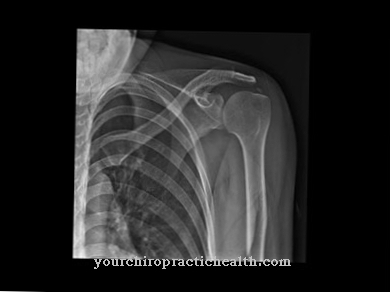Flying is part of everyday life for many professionals. When the next generation is announced, some of the things that are taken for granted are questioned. But what about that Flying in pregnancy out?
How long can you fly as a pregnant woman?
During pregnancy, it may also be necessary to move from one place to another by plane. Possible reasons are visits from relatives or friends, important business appointments or a vacation in distant regions. Basically this represents Flying in pregnancy This is not a big problem. However, the pregnant woman should pay attention to a few criteria before boarding an airplane.
For example, the duration of the flight plays an important role. During every flight, the passengers on board are exposed to greater exposure to radiation. The radiation exposure is 50 percent more intense than the average exposure that prevails on the ground. However, this only applies in the event that the pregnant woman would travel by plane every day. For individual flights, the burden is only a fraction.
Radiation experts therefore do not assume any greater risks for the unborn baby. Sometimes the radiation exposure on the ground can be even higher than in the air, but this depends on the place where the future mother will live.
The strength of the radiation dose also depends on the altitude to which the aircraft climbs and how long it is in motion. For flights at high altitudes that take several hours, there is a higher level of radiation exposure than for shorter flights at shorter distances.
What are the risks of flying during pregnancy?
Flying during pregnancy can involve certain risks. Especially in early pregnancy there is a risk of malformations from ionizing radiation. This is how the child's organs develop from the 5th week of pregnancy. For this reason, experts recommend flying as little as possible during this period and avoiding long-haul flights completely.
When choosing a holiday destination, you should also only select destinations that do not require long-distance trips to tropical regions. On the other hand, destinations within Europe are considered safer. This also reduces the risk of thrombosis that can occur after a long-haul flight. This causes blood clots to form in the legs. To avoid this, it is advisable to walk around a bit during the flight.
It is also important to drink enough fluids. It is also important to choose a comfortable seat that allows as much legroom as possible. You can also counteract a blood clot by putting on special Class 2 compression stockings.
In the opinion of many doctors, there is no need to worry about the reduced oxygen content in the aircraft as the altitude increases. If the jet is moving at normal flight altitude, the decrease in oxygen content is not so great that it could cause a miscarriage. The scanner at the airport does not pose any risk either, because it is not an X-ray machine.
In the last trimester of pregnancy, however, it is better to avoid flying to avoid an unplanned birth on the plane.
Flying with a certificate
If the pregnant woman has reached the 28th week of pregnancy (SSW), she needs a medical certificate in order to be allowed to board an airplane. From the 34th to 36th week of pregnancy, most airlines do not generally allow heavily pregnant access. If the mother is expecting twins or even multiple births, this applies from the 29th week of pregnancy.
However, there are also exceptions for short flights, so that there are no uniform criteria. The attending gynecologist will issue a certificate that entitles you to travel by air. Some airlines even have pre-printed forms available on their websites that can be presented to the gynecologist. When checking in, the medical certificate must not be more than two weeks old.
The medical document contains the expected due date, the current week of pregnancy and a certificate of fitness for flying for the pregnant woman. An uncomplicated pregnancy is also confirmed. Apart from the medical certificate, it is also recommended that you present your maternity record.
High-risk pregnancy - it's better to stay on the ground
Flying is generally not recommended if there is a high-risk pregnancy. The pregnant woman should not suffer from placenta previa, cardiovascular diseases or premature labor. The same applies to the tendency to miscarriage or premature birth. You should also refrain from traveling by plane if you are very afraid of flying or if there is an increased risk of thrombosis.
Tips for a carefree travel pleasure
If you don't want to do without flying despite your pregnancy, you should at least pay attention to a few tips. We recommend taking out travel cancellation insurance. If, for example, the onset of labor prematurely, which leads to the cancellation of the flight, the otherwise usual cancellation fees do not apply.
Air travel is particularly useful for pregnant women between the 4th and 6th month. During this period, the problems of early pregnancy such as morning sickness have already subsided and the stomach does not yet show any disturbing size.
It is also important to always have the first-aid kit with you when flying, to drink enough, to ensure legroom, to wear comfortable clothes and to always wear the seat belt below the stomach.
Pilot or stewardess?
If a pregnant woman works as a flight attendant or pilot, special rules apply. Because of her pregnancy, she is classified as unfit to fly. However, there are also exceptions here up to the 26th week of pregnancy if a gynecologist determines that the pregnancy is complication-free. However, the exact criteria vary from airline to airline.








.jpg)





.jpg)






.jpg)






